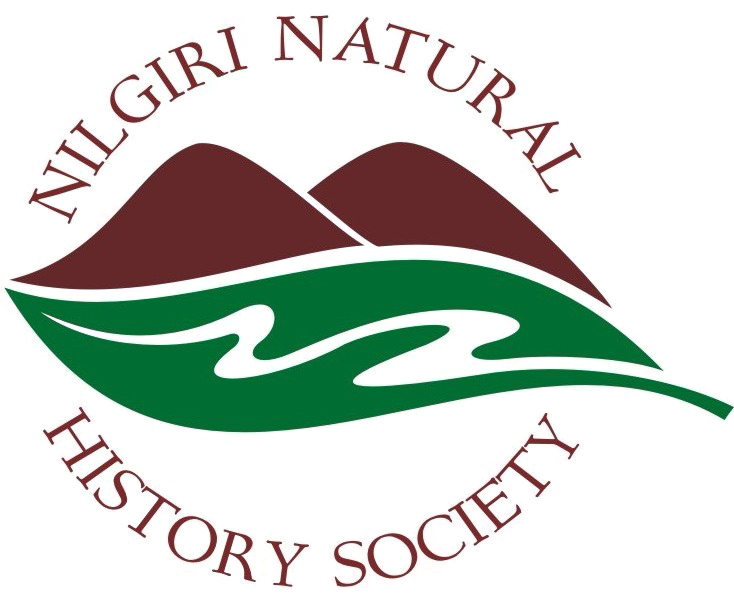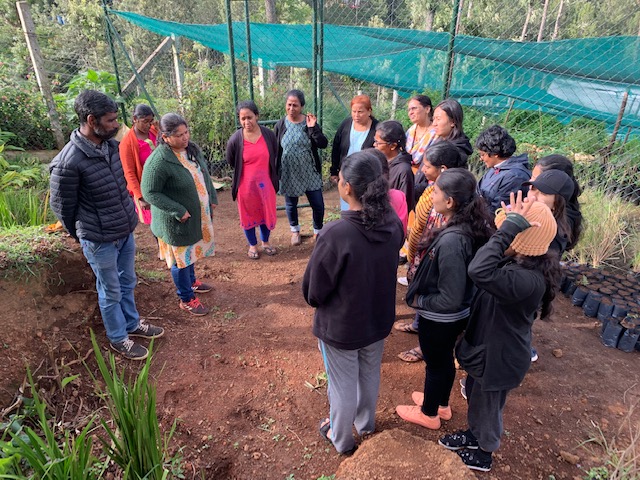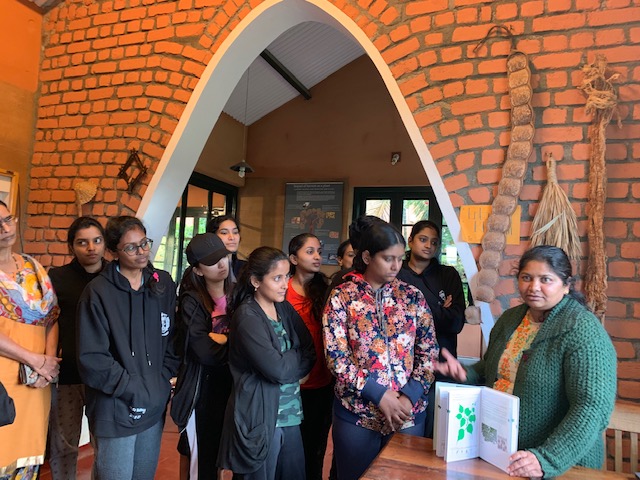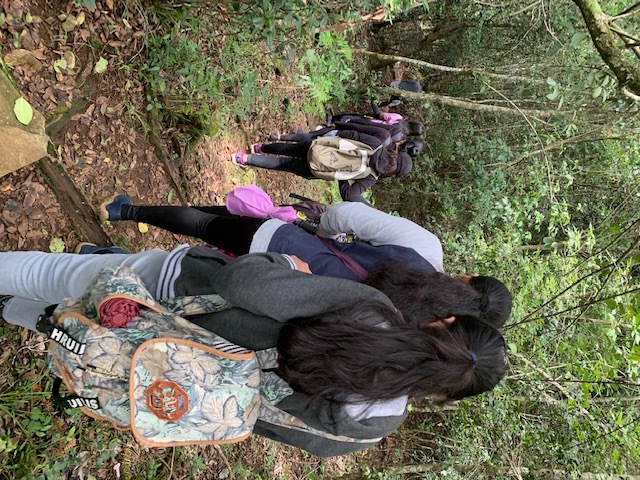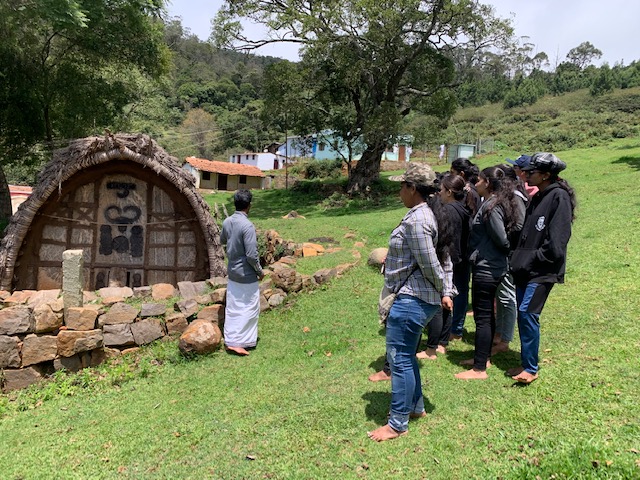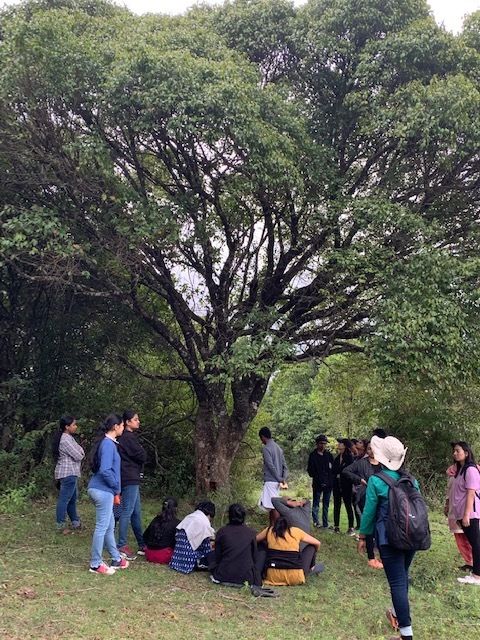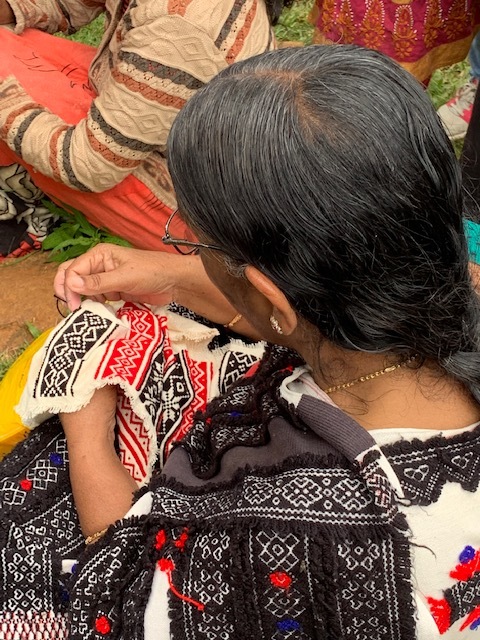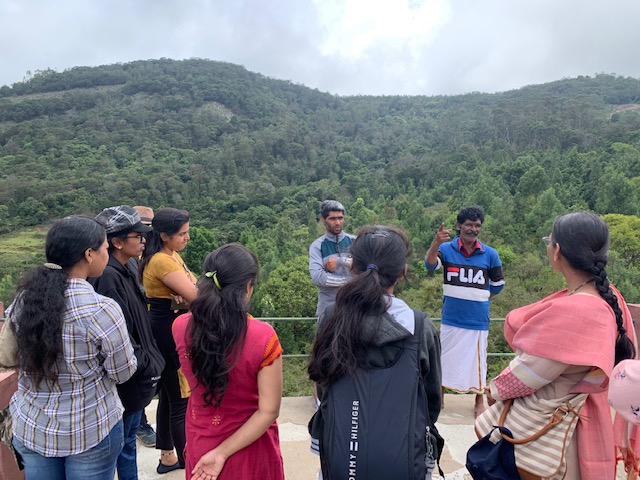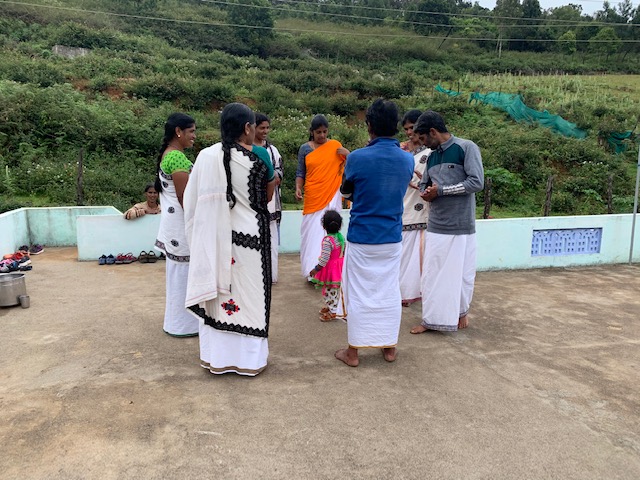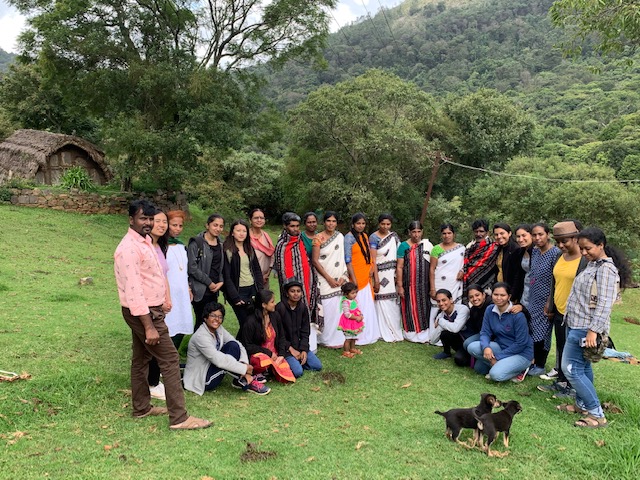A team of 18 students from Mount Carmel College (girls) visited Keystone between September 5-7, 2019 and undertook flora exploration and community interaction, with Keystone Foundation and NNHS. They were accompanied by faculty and admin staff. The faculty included Ms. Roshni Rao (HoD), Ms. Sumathi, Ms. Shalini and Ms. Jayanthi , and Mr. Kuppa, the admin staff.
It was an enthusiastic bunch of 3rd semester students of Masters in Botany course who landed up late afternoon at the Keystone campus on their way from Wayanad. Though starved for lunch, the girls were super excited and open to the new explorations that we had lined up for them. After a late lunch, the students trotted off to the nursery, where they were met with Keystone staff – Ms. Shiny Rehel, Kaveri akka and Arad kuttan who showed and explained about the native of the region- grasses and trees, and the efforts of Keystone in restoration in the landscape.
The students then headed off to Aadhimalai where they were shown the different production centres, the resources (organically farmed or harvested from the wild) that were locally available and the value addition products made that help provide livelihoods and fair pricing for the communities involved at these sites. At the next stop at the biodiversity and restoration group, they were shown the various resource materials that were published as outcomes of research in the landscape with the involvement of the community –be it the books on local flora or the books on traditional foods. Relaxing down, the students watched a short film showcasing the beauty and vulnerability of the Nilgiris and the modern day threats to the ecosystems herein.
The next day was bright and sunny as they made their way for a day-long immersion into Toda culture and way of life, at Kodithenmund. A short hike to the mund took them through a small shola patch opening up into the montane grasslands, that were the typical siting for the Toda hamlets called ‘munds’. Here they were greeted by the community who walked the students through the numerous cultural sites and rituals that formed an intrinsic part of Toda living – the temple, the buffaloes, birth and death rituals, and marriage rituals to name a few. Woven into these stories were the many plants and plant materials that found its place in the Toda culture. It was a treasure trove of information for the students who were also interested in ethnobotany.
The knowledge packed session was followed by a truly delicious fare of Toda cuisine – predominantly made from milk and buttermilk which was relished by all without an exception. A short demonstration session on Toda embroidery and it was time to call it a day. As many of the students put it, “it was a memorable, once in a lifetime experience”, that the students took back with them, while making plans for the future – to come back to work with the communities in these landscapes.
